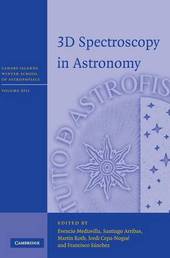
|
3D Spectroscopy in Astronomy
Hardback
Main Details
Description
Simultaneously storing both spectral and spatial information, 3D spectroscopy offers a new way to tackle astrophysical problems, and opens up new lines of research. Since its inception in the eighties and early nineties, research in this field has grown enormously. Large telescopes all around the world are now equipped with integral field units, and two instruments of the James Webb Space Telescope will have integral field spectroscopic capabilities. Nowadays, more effort is dedicated to refining techniques for reducing, analysing and interpreting the data obtained with 3D spectrographs. Containing lectures from the seventeenth Winter School of the Canary Islands Astrophysics Institute, this book explores 3D spectroscopy techniques and data. A broad and balanced presentation of research in this field, it introduces astronomers to a new generation of instruments, widening the appeal of integral field spectroscopy and helping it become a powerful tool in tackling astrophysical problems.
Reviews'This new volume in the Canary Islands Winter School series continues the fine tradition of providing a thorough summary of an area of astronomy, at a level aimed squarely at graduate students ... this volume will be seen as a milestone. It deserves a place in any graduate-level observational techniques and instrumentation class.' The Observatory
|